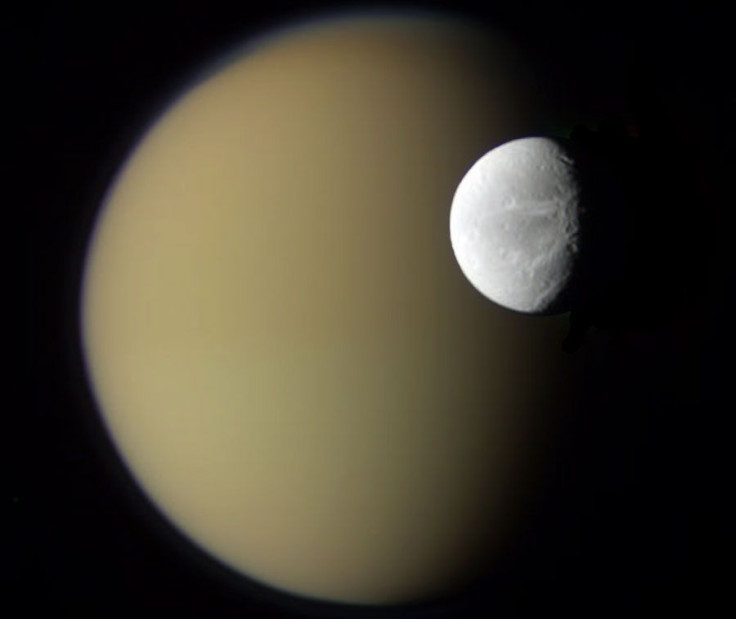NASA Unexpected Discovery: 'Weird' Molecule Found In Saturn Moon Titan's Atmosphere
KEY POINTS
- NASA discovered cyclopropenylidene in Titan's atmosphere
- The molecule forms the backbone rings for the nucleobases of DNA
- NASA's Dragonfly mission will try to determine if the Saturn moon is habitable
NASA has discovered a "weird" molecule in the atmosphere of one of Saturn's moons researchers said could serve as a building block for compounds that could later form or feed extraterrestrial life.
NASA said in a statement on its website that a molecule called cyclopropenylidene, or C3H2, has been detected in the Saturn moon Titan. According to the space agency, this simple carbon-based molecule, which was discovered thanks to observations from the Atacama Large Millimeter/submillimeter Array (ALMA) in Chile, has never been found in any other atmosphere.
A research team led by NASA scientists published their findings in the Astronomical Journal earlier this month. NASA planetary scientist Conor Nixon, the lead author of the study, said the discovery of cyclopropenylidene, which is made up of carbon and hydrogen, was “really unexpected.”
The researchers said the molecule is scattered in different corners of the galaxy. But detecting it in an atmosphere is a rare occurrence as C3H2 reacts easily with other molecules that it comes in contact with and forms different species.
Until its discovery in Titan's atmosphere, scientists have only found cyclopropenylidene in regions that are too cold and diffuse to make chemical reactions possible. These include clouds of gas and dust that float between star systems.
But unlike these regions, a large number of chemical activities occur in Titan's atmosphere. Nixon and his team deduced that they were able to find traces of cyclopropenylidene likely because they were looking in the upper layer of the moon's atmosphere, where there are fewer gases and molecules for C3H2 to interact with.
"Although C3H2 is not known to be used in modern-day biological reactions, closed-loop molecules like it are important because they form the backbone rings for the nucleobases of DNA, the complex chemical structure that carries the genetic code of life, and RNA, another critical compound for life’s functions," NASA stated on its website.
Scientists are currently working to determine whether or not Titan, the largest of Saturn's 62 moons, is habitable. This is one of the aims of NASA's upcoming Dragonfly mission.
The mission, which is expected to launch in 2027, will deliver a rotorcraft to Titan to sample materials from the moon and determine its surface composition in different settings.
For the researchers at NASA, finding cyclopropenylidene is a big step forward in this future mission.
“We think of Titan as a real-life laboratory where we can see similar chemistry to that of ancient Earth when life was taking hold here,” said NASA astrobiologist Melissa Trainer, one of the chief scientists of the Dragonfly mission.
“We’ll be looking for bigger molecules than C3H2,” Trainer said, “but we need to know what’s happening in the atmosphere to understand the chemical reactions that lead complex organic molecules to form and rain down to the surface.”

© Copyright IBTimes 2024. All rights reserved.





















